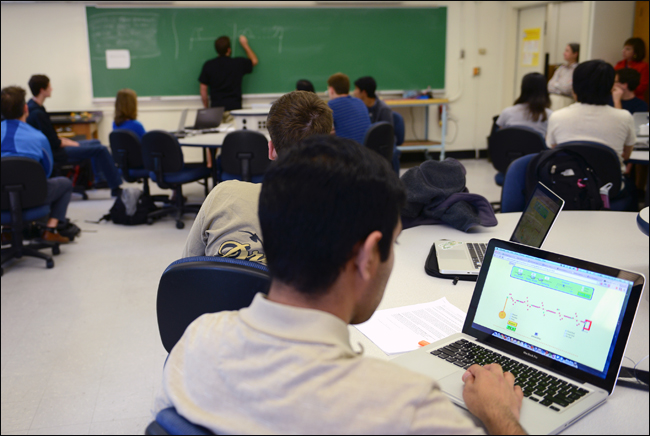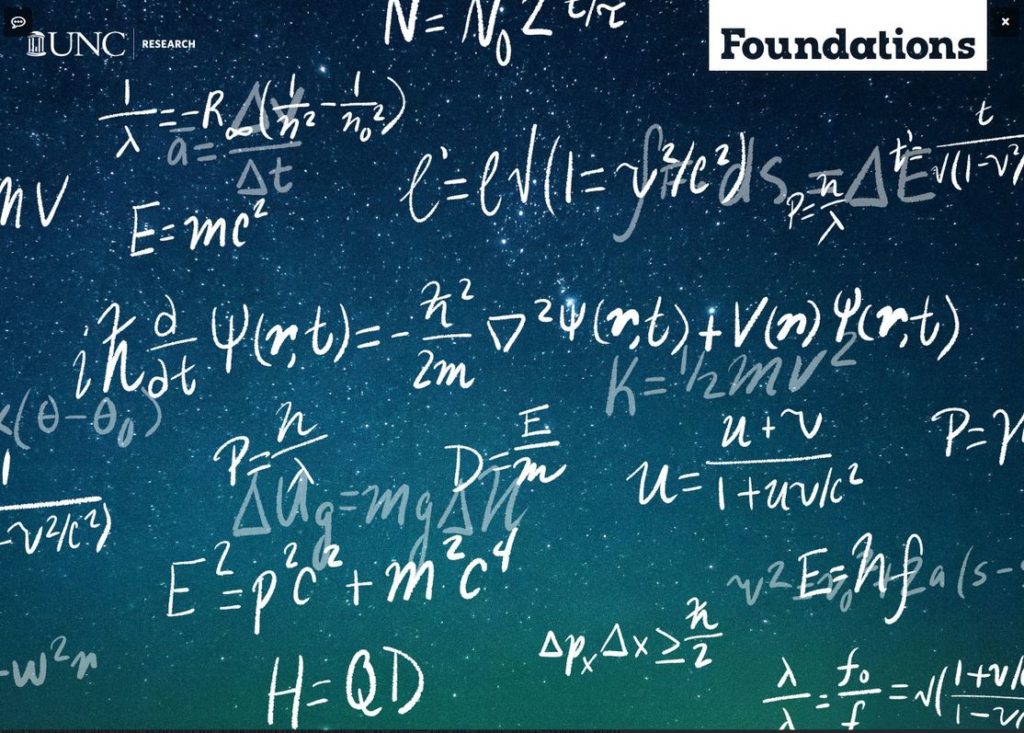The quarterback kept running the same play during a high-school scrimmage. Three times in a row. His teammates looked around, wondering what was going on. Then the quarterback ran the same play a fourth time.
Jason Mihalik, at the time a graduate student and athletic trainer, was on the sidelines. “Is he supposed to be doing that?” Mihalik asked the coach. No, he wasn’t. Mihalik said, “Let’s take a look at him.” The player jogged off the field so Mihalik could ask him some questions. The kid was confused; he said his head felt weird. Mihalik determined that the player was probably concussed and shouldn’t return to action. Then Mihalik laid out a schedule of meetings and health standards the player would have to meet before he could play football again.
Had Mihalik not been on the sidelines, it’s doubtful that the player’s symptoms would have been properly documented from their onset. The player’s progress would have been difficult to measure, which would have made it hard to determine when the quarterback could return to the huddle.
For years the CDC has provided toolkits — bulky boxes that include paperwork, DVDs, and clipboards — to help coaches and athletic trainers recognize the signs of a concussion and help parents of high school players understand what to do. The kits contain all the information a coach or trainer needs, Mihalik says, but they aren’t intuitive or convenient to use in some settings. A 2008 study showed that 90 percent of the coaches with toolkits weren’t using them to communicate injury information to parents. That’s not what Mihalik and other researchers had hoped to see.
But what if those toolkits were on the coaches’ cell phones? An app that would take no more than five minutes to go through — would coaches use that? What about an app tailored to athletic trainers?
Mihalik, now an assistant professor in UNC’s College of Arts and Sciences, thinks so. He’s teamed up with pediatric neuropsychologist Gerry Gioia to create the Concussion Recognition and Response App for the iPhone, iPad, iPod Touch, and Android. It helps users recognize the sometimes subtle signs and symptoms of concussion and guides them through the next steps. Say a soccer player is slow to get up after a tough tackle and is brought to the sidelines. A coach could determine within five minutes whether the player showed symptoms consistent with that of a concussion.
“The app is like a decision tree,” Mihalik says. It prompts users to answer a series of questions: Does the player feel dizzy? Is the player nauseated? Was there a blow to the head or was the head jerked? Mihalik and Gioia came up with the questions based on published research, some of which Mihalik and Kevin Guskiewicz conducted here at UNC. The answers to questions determine the app’s next prompts. By the end, the app determines how to proceed. If a player shows any signs or symptoms of a concussion, then the app advises the user to keep the player off the field.
Joe Bouffard, a coach in Connecticut, says he’ll use the app this season. “All the questions truly analyze if the athlete shows signs and symptoms of a concussion,” he says. There are yes or no answers. It’s not just looking at the kid and saying, ‘well, I think he might be concussed.’ It’s all right there. It’s consistent. It’s concrete. And I have to put my name on the report.”
Bouffard also is director of the Youth Football Coaches Association. He’s publicized the app on the association’s website, hoping that youth coaches buy it. “A lot of coaches are dads,” he says. “They’re new to coaching. I think they or a parent — someone on the sidelines — should have this kind of technology.”
The app allows the user to store the concussion report on a phone, and if symptoms are severe enough it prompts the user to hit the 911 button. The app has a GPS built in so emergency responders know exactly where to go. And there’s a prompt to email the player’s parents. “And it allows parents to forward the report to the doctor,” Bouffard says. Those emails, though, don’t signal the end of the app’s usefulness.
Drop cap
At UNC a certified athletic trainer attends every game and practice for each sport. Smaller colleges, high schools, middle schools, and club sports don’t have that luxury. “A high-school athletic trainer might be covering a football practice, but there’s also field hockey, lacrosse, soccer,” Mihalik says. “You can’t be everywhere at once. Coaches can use this app to email a report to the athletic trainer and follow up on the phone.”
The athletic trainer, then, will know immediately that a concussion might have occurred. That’s no small thing, Mihalik says. Timeliness matters with concussions. “One of the things we see a lot is a kid will get injured on a Friday but won’t come in to see us until Tuesday,” he says. Maybe a coach held him out of practice but didn’t note all the symptoms. Then, because the player wasn’t 100 percent, the coach sent him to the athletic trainer. “So, we wind up asking the player how he felt when he was injured,” Mihalik says. “Well, if he had a concussion he won’t be able to really tell us how he felt four days ago.”
If a coach emails the report, then parents or athletic trainers can continue to use the app to update the player’s status. This way the doctor will have four days of data to measure progress.
“There’s nothing lost in translation,” Mihalik says. If a player’s condition worsens, the app directs parents to seek immediate medical treatment. If parents want to, they can email the concussion report to teachers, who might benefit from knowing that their student is sensitive to light or has become a bit moody, both symptoms of a head injury. Bouffard says the app will help doctors, parents, and youth coaches determine when it’s okay for a player to return to the field, and that would reduce the risk of a second concussion.
“We’re not trying to make it so coaches and parents can diagnose concussions,” Mihalik says. “The app can’t do that. Coaches can’t do that; they’re not medical professionals. But the app can walk coaches and parents through a systematic process of observing signs and asking about symptoms. It can help them recognize that a concussion might have occurred and what they should do next.”
The app, published by PAR, Inc., costs $3.99 and is available through iTunes or Android Market. Within a month of putting the app on the market, PAR had sold about one thousand.
Mihalik is now finishing up a second app geared toward sports medicine professionals. It’s a bit more in-depth, featuring proven assessment tools such as the Balance Error Scoring System and the Standardized Assessment of Concussion. This second app also allows athletic trainers to create a baseline of BESS and SAC scores before a season starts. If a player is hurt during the season, the athletic trainer can test the player again and compare the scores to preseason baseline data. This can help athletic trainers determine whether a player is healthy enough to return to action.
“One reason we’re getting collaboration from the BESS and SAC authors is that the royalties from our app go directly to our research foundations,” Mihalik says. “We don’t make a profit. The money helps pay for stipends, doctoral students, things for research. We just wanted to create a good resource that uses some of the CDC materials. Something coaches will use.”
Jason Mihalik is an assistant professor in the department of exercise and sport science in the College of Arts and Sciences, and he’s codirector of the Matthew A. Gfeller Sport-Related Traumatic Brain Injury Research Center.
— By Mark Derewicz, Endeavors magazine




